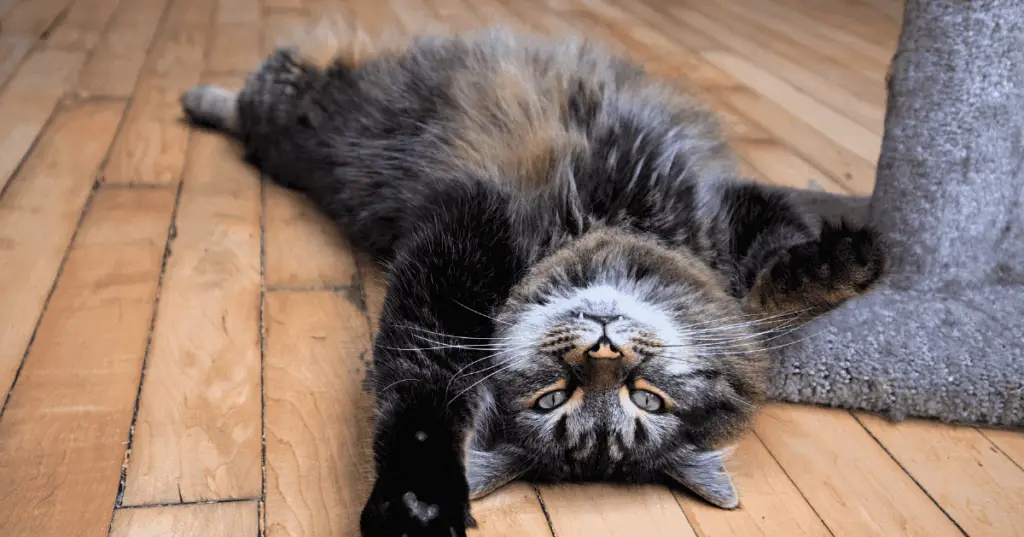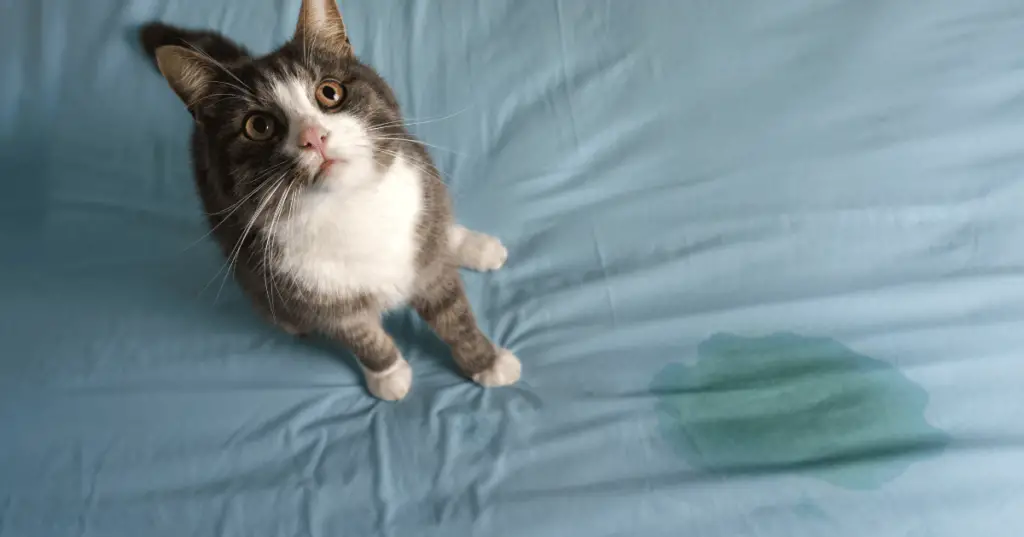Cats are fascinating creatures with their unique ways of communicating with us. Sometimes, they do things that make us wonder, like when they arch their backs and twitch. Have you ever noticed your cat doing this? If so, you might be curious about why they do it.
Cats use body language and sounds to talk to us, but some actions can be mysterious. One of those mysteries is why cats twitch their backs, sometimes called “cat back twitching.”
In this article, we will explore this behavior and try to figure out what it means. We’ll look at different reasons, like their instincts, possible health concerns, and even their feelings. Understanding why cats do this can help us connect better with them and make sure they’re happy and healthy.
Why do cats twitch their backs?
Cats twitch their backs for different reasons. Firstly, they might arch and twitch their backs to reach tricky spots like tangled fur when grooming themselves. It’s like when you try to scratch an itch. Secondly, cats also twitch their backs when they stretch. It’s like our morning stretches to keep their muscles flexible.
Sometimes, cats twitch their backs when they’re playing. It’s part of their playful antics, especially when they’re chasing toys or pretending to hunt. They get all excited, and their backs may arch.
But, if you notice your cat twitching their back a lot, especially if it’s new or excessive, it could be a sign of discomfort or pain. It’s crucial to check with a vet in such cases to make sure your cat is healthy.
Reasons for Cats Twitching
Cats can twitch for various reasons, and it’s important to understand that not all types of twitching are the same. Here are some common reasons why a cat might twitch
1. Scratching an itch
When a cat feels an itch on its back, it’s like when we feel it on our skin. The cat’s natural response is to try and scratch that itchy spot to make it feel better. Cats have sharp claws, and they use them to scratch the itch. Now, as they scratch, something interesting happens. The scratching helps with the itch and makes their back muscles move. This muscle movement can lead to a twitching or arching motion in the back.
It helps spread the natural oils on their skin, soothing the itch. So, when you see a cat scratching an itch on its back and its back twitching a bit, it’s just the cat’s way of getting rid of that annoying itch and caring for its fur. It’s like a little self-grooming routine to keep them comfortable and clean.
2. Playfulness
Playfulness can make cats twitch because they get excited and active when they’re playing. They might chase toys, jump around, and act like little hunters. This excitement and activity can cause their muscles to twitch or move quickly.
For example, when they pounce on a toy, they arch their backs and use their muscles to make the jump. This can result in a little twitch in their bodies. So, if you see your cat twitching during playtime, it’s usually a sign that they’re having a blast and getting caught up in the fun.
3. Stimulation
When something surprising or exciting happens around a cat, it can make their back twitch. Imagine you’re watching TV, and suddenly there’s a loud noise outside your window. You might jump a little or feel a quick jolt of surprise. That’s what happens to a cat when they’re stimulated.
Cats are naturally very curious and alert, so when they notice something new or unexpected, their bodies can react quickly. This reaction can include twitching their backs as they prepare to check out what’s happening. It’s like a built-in response to help them stay on top of things and be ready for action.
4. Discomfort or pain
A cat can twitch their body when it feels uncomfortable or in pain. Imagine if you had a sore spot on your arm and kept moving it to find a more comfortable position. Your arm might twitch a bit as you try to feel better.
Cats are the same way. If something is bothering them, like an injury or an itch that won’t go away, they might need to move or twitch to try and relieve that uncomfortable feeling. It’s like their way of saying.
5. Social interaction
When a cat interacts with someone they like, such as their owner or another cat friend, they can get really happy and excited. This happiness can make their back twitch a little. It’s like when we get excited and bounce up and down or smile bigger.
When a cat arches its back and rubs against you, it’s like a friendly hug in the cat world. This can make their back twitch a bit too.
Safety consideration
Safety considerations for a cat’s back twitching primarily revolve around understanding when it’s a normal behavior versus a potential sign
- Understand the difference between normal twitching (during grooming, play, or social interactions) and unusual or excessive twitching, which could indicate a problem.
- Watch for signs of pain, like crying, not eating, or avoiding certain movements. If you suspect pain, see a vet.
- Regularly check for skin issues, wounds, or fleas, as skin problems can cause twitching.
- Ensure your cat’s living space is stress-free and safe to prevent excessive stimulation or stress.
- Schedule routine vet visits to catch and address health issues early.
Conclusion
Cats twitch their backs when they want to communicate and react to the world around them. We’ve learned that they twitch during grooming, stretching, play, and when they’re excited to see us.
While most of the time, these cramps are signs of a happy and healthy cat, it’s important to be vigilant. If your cat’s back twitching becomes excessive or unusual, especially if it seems they’re in pain, it’s best to consult a vet. Quick action can help ensure your cat’s comfort and well-being.
In the end, understanding your cat’s behavior, including their back twitching, helps you care for your furry friend better. So, enjoy your cat’s quirky twitches, and watch for any changes to keep them safe and content.



